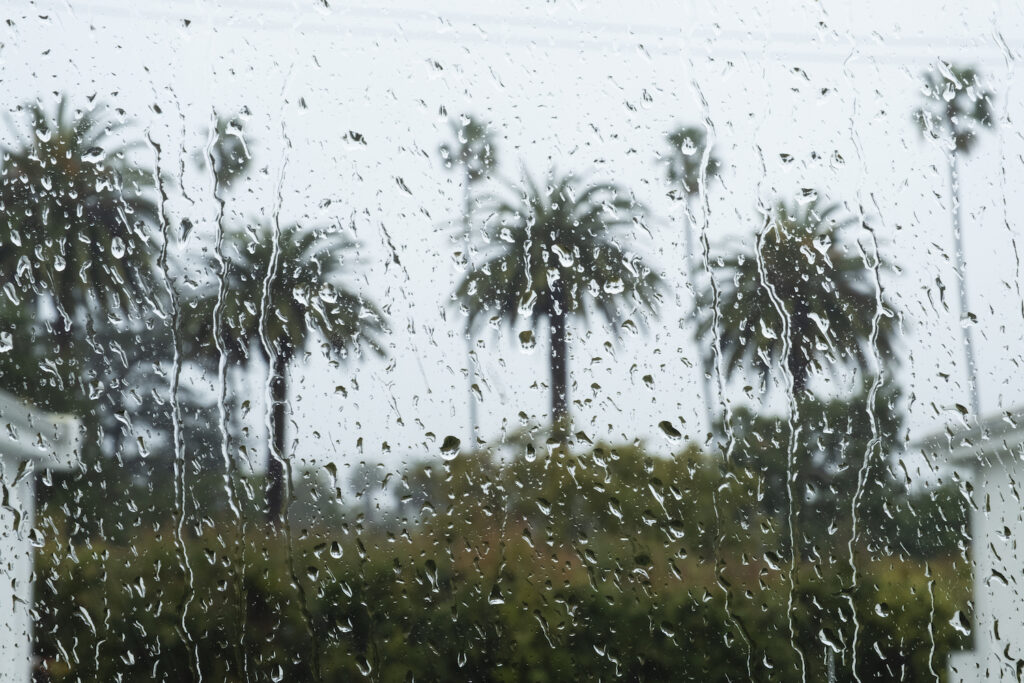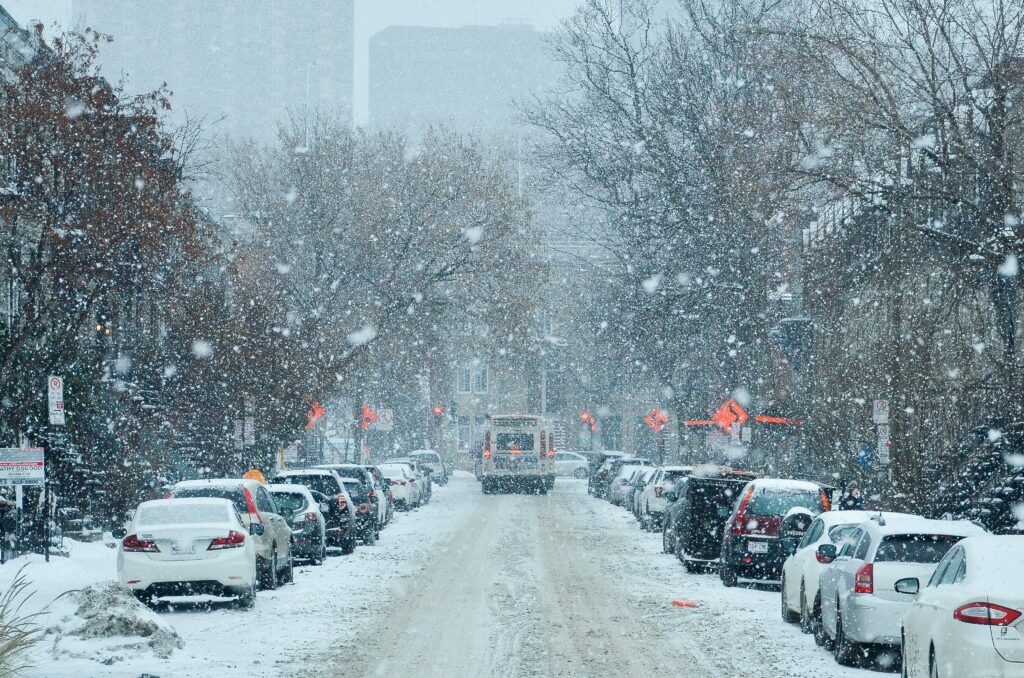Our vacation coincided with a terrible storm that caused lasting havoc in North America including ruining many Christmas travel plans and killing several dozen people outright. It then yielded, at least briefly, to mild conditions. Which reminds us that unusually cold weather is more dangerous than heat in two ways: immediate and lasting. Even in the short run, heat waves are not as bad as a big chill. And when unusual warmth ends, it ends, whereas snow, ice, sleet and freezing rain keep causing trouble by the damage they do. Hence “Families in western New York were scrambling to find food, medicine and other essentials Monday after a historic blizzard blocked roads and cut off electricity, forcing many major supermarkets and pharmacies to close.” Heatwaves don’t do that sort of thing.
Everybody knows it, too. On Dec 18, warning of travel disruptions and presenting a map of the country with forecast temperatures lower than normal everywhere but the southwest, the New York Times spoke of temperatures that “have already plunged into the minus 20s, leaving some residents unable to start their cars…. cars and trucks have spun out of control, forcing the highway to close…. the ghastly weather has also forced the cancellation or delay of hundreds of flights” but discreetly left the word “climate” out of the story. Likewise, NBC warned on Dec. 29, “New York prepares for possible flooding from snowmelt while the West girds for heavy rain and snow”. In this case note that the flooding in question was the consequence not of unseasonable warming but of the heavy snowfall that preceded it; as the story added, “snowmelt alone does not normally cause major or widespread flooding and usually needs to occur simultaneously with a heavy rain event, which is not in the forecast for that region”.
Winter weather also knocks out infrastructure when people need it most, in ways that linger. Buffalo mayor Byron Brown noted that “Some people have not been able to restock groceries, to restock medications, to get to medical appointments, and being able to lift the travel ban safely now will allow people to do those important things”. When did a heat wave last lead to a travel ban that left people without food or medicine?
Another NBC story also from Dec. 29 recounted the uplifting tale of how “Stranded motorist made his way to safety in New York blizzard and then made sure dozens of others did, too” complete with this hero apologizing for breaking a school window so they could shelter inside the school. But how often in a heat wave are such measures necessary to avoid immediate death by exposure among healthy adults? And how often does heat make it necessary to locate heavy machinery, such as the snowblower he managed to find, to dig out people’s cars?
Even California got clobbered by winter in mid-December, so it was no regional phenomenon. And on the other side of the world later in the month, “Heavy snow in Japan leaves 17 dead, dozens injured”. With as much as three times the normal annual amount in much of the northeast, vehicles were stranded, delivery services disrupted (a particular issue in a nation with an aging population) and power was knocked out, and nearly a hundred people were significantly hurt, including by falling snow from rooftops. And like the United States, Japan is a wealthy nation with robust infrastructure and many powerful, high-tech vehicles. Imagine the misery and death from such events in poorer places which, mercifully, are generally also warmer.
One of our viewers commented sardonically back in November that:
“In October the CBC weather told me that ‘Canadians are bracing for record high seasonal temperatures’. Yes as a Canadian I worry when the temperature outside is the same as the temperature inside. No I’m bracing for -17 in November which in my 60 years is a record I am bracing for.”
But despite using terms like “bracing” for a mild fall, even committed alarmists secretly know that warmer weather is better. On Dec. 28 NBC sighed with relief that:
“Warmer weather is expected to spread across much of the United States over the next three days after a deadly winter storm that killed more than 60 people and walloped New York’s Erie County… Highs 5 to 20 degrees above average are expected through the holiday weekend in much of the country, which will help melt the snow in Erie County’s Buffalo area and lead to a mild New Year’s Eve and New Year’s Day for most areas east of the Rockies.”
The only downside was that “five separate storm systems are expected to bring double-digit rainfall and 3 feet or more of snow to the West through early next week.” And indeed by January 2nd they were warning that Round 2 was on the way: “Winter storm expected to bring snow, freezing rain and tornadoes to parts of U.S.” This stuff is bad news:
“A winter storm moving across the central Plains and Upper Midwest this week is expected to bring heavy snow, sleet and freezing rain to parts of the United States, while tornadoes could form farther south, officials have warned…. Gusty winds are also expected to produce areas of blowing and drifting snow, which the weather service warned could result in snow-covered roads and reduced visibility, creating potential travel hazards.”
What heat-related condition is remotely similar? Perhaps wildfires, with their associated smoke. But as we’ve catalogued, wildfires are becoming less common around the world even as stories calling them proof of global heating become more common. Freezing rain is way worse than the other kind, as a personal experience, as driving conditions, and for its impact on power lines.
Climate orthodoxy holds that warming brings worse weather. But who really believes it? Do residents of Canada’s capital get messages in July equivalent to “Hydro Ottawa crews are preparing to respond to power outages as a potential winter storm passes through the National Capital Region starting late Thursday, December 22, and moving into the weekend”? Of course not. But at this time of year you certainly get “‘Working day and night’: 11,000 people still in dark following Quebec winter storm” and “Niagara, Chatham-Kent in southern Ontario have states of emergency in place as blizzard conditions cause power outages and road blockages.”
Likewise the New York Times spoke of a “vicious” storm and advised that:
“It’s not too late to prepare for the storm. At home, take a few precautions. Open kitchen and bathroom cabinets under sinks and leave faucets on a slow drip overnight, to guard against frozen pipes. Secure items outside your home, like patio furniture that could tumble around during high winds.”
Then it warned that “Nearly 1.2 million customers nationwide were without electricity.” Do heat waves tear down power lines?
Admittedly they can overload grids too reliant on alternative energy. But do heat waves disrupt delivery services? Cause widespread flight cancellations? And how many people die stuck in their vehicles in a heat wave? By Dec. 27 at least 64 Americans were dead from these storms, a great many trapped in their cars, from the elderly to young adults. And one reason why is that “record snowfall blocked roads, hindering rescue operations”.
Canada has an annual fundraising event for the homeless called, wait for it, “The Coldest Night of the Year.” Somehow “The Hottest Night of the Year” just doesn’t have the same effect. And thus in the recent storms, NBC complained, even in Texas “Desperate migrants are met with cold, no room at shelters after crossing the border” as advocates tried to protect them from frigid temperatures.
It’s true that vulnerable people living alone are also at risk during heat waves, as they are during snowstorms. But in the former case those that are mobile can get out of their buildings unaided, and those that are not can be reached and assisted by relatives or officials. Not so during blizzards, which is why, if we had to choose, severe cold events are worse than heatwaves.



Folks talk about global average temperature increases of 1° or so. I was wondering what the average global temperature as a function of latitude is from the equator to the poles. Does the predicted temperature rise fall insude our outside that range?
@Dennis Klipa: It's the average global temperature that's rising a little. From the geological record we can see that the temperature at the equator stays about the same, but the temperature closer to the poles increases. So instead of saying "the world is heating up" it's fairer to say that "the band of lovely tropical weather that surrounds the equator is expanding".
The bit of magic that climate change alarmists invoke as a response to severe weather events is they blame EVERYTHING on climate change: Atmospheric rivers, heat waves, tornado frequencies, and so on. That leaves humankind to focus on adaptation, not prevention, starting with population control.